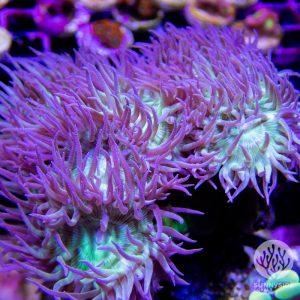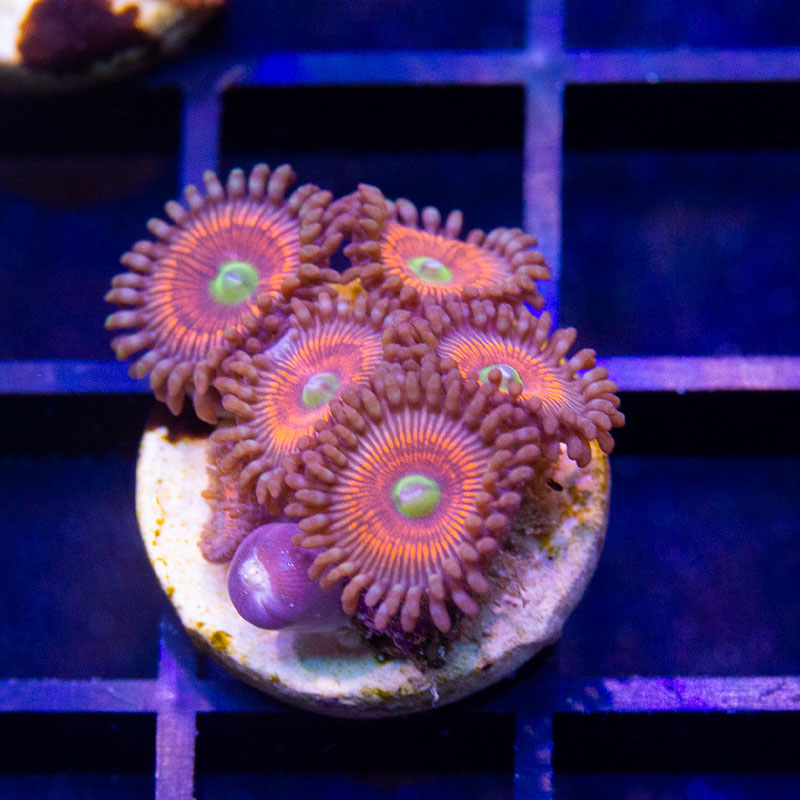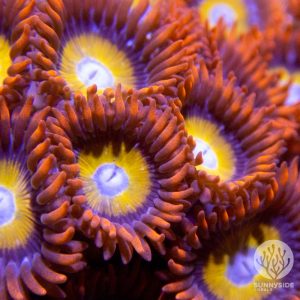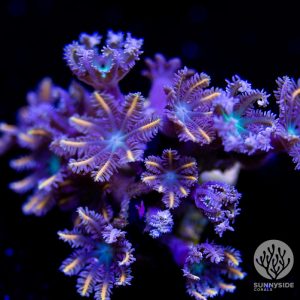Just Starting Out
Starting a new saltwater reef tank can be intimidating but everyone has to start somewhere. Lucky for you we have written this just for you! Here are some of the basic things you will need to know when getting started as well as some of our favorite corals you can try almost right away.
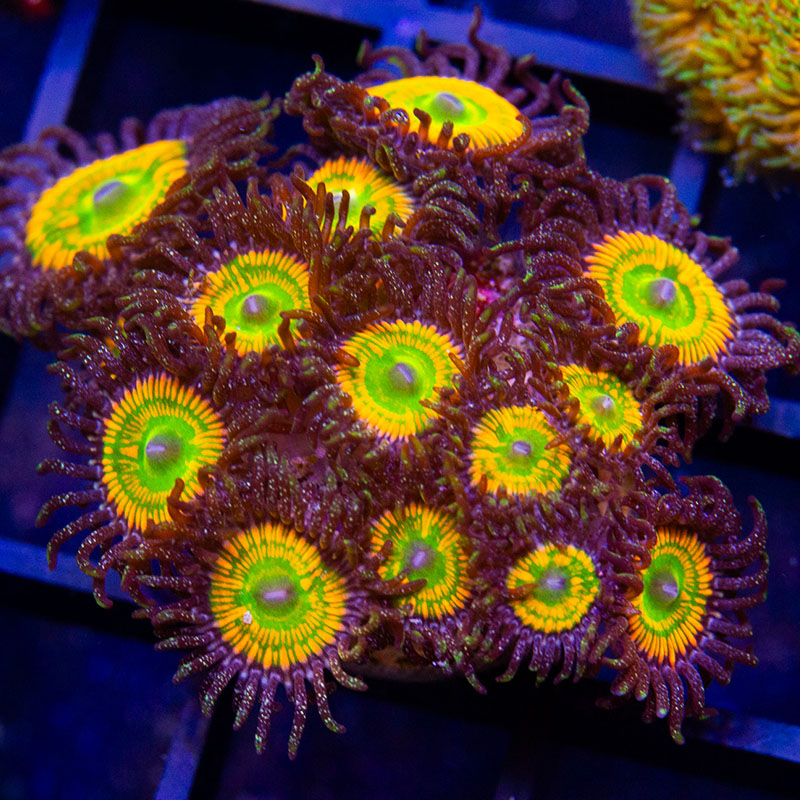
General Beginner Coral Care
What lighting should I use?
Lighting is very important for any salt water tank. As you start to add nicer, high-end corals, your lighting might be what kills or brings out amazing colors. At Sunnyside Corals we run T-5s and gen 4 radions on almost all of our corals. We find this gives the best spread and light intensity to grow a wide variety of corals. Typically when starting out, you can buy full tank packages that come with lights that will work just fine. As you get more into the hobby you might decide to upgrade to better lights.
Flow Requirements
Saltwater tanks use pumps to recreate ocean tide or flow. Most pumps sold today have automated programs that you can set for your tank. As you place your corals you will want to think about how much flow they will be receiving. Most beginner corals do not like as much flow and so if you place your pumps higher in your tank, the return flow should be just enough on the bottom of your tanks to meet the needs of your corals. Placing corals near rocks or higher or lower in your tank can also affect the amount of flow a coral receives.
How to place your coral
When starting out it can be hard to know where to place your corals. We recommend that the first thing you do is look up videos and images of other people’s tanks to see how they have set up their tanks. Once you find a rock scape that you like, try to copy it. Next once you have gotten your corals, try to find places that match the flow and light recommended to each coral. Also, try not to just put all of your corals next to each other. Try to add depth to your tank by placing the corals in different places around your tank. Also, think about your end goal. Just because you should start with easier corals doesn’t mean you will want them in your tank in a year. Place corals that you may not want for a long time in areas that are easy to remove. If all of your corals like lower lighting, consider lowering the intensity of your lights so that you can put corals up higher in your tank
Water Parameters
This is an ongoing subject that does not have a definitive answer. For our tanks, we aim to keep our parameters close to these numbers.
Phosphates – .04 to .08 or lower
Nitrates – 1 to 2
Calcium – 480
Alkalinity – 8 to 10
Magnesium – 1350
If you are running a “clean” tank, meaning fewer nutrients you will want to keep your Phosphates and Nitrates as low as possible. Clean tanks are more common for people trying to grow Acropora and have systems older than a year. “Dirty” tanks have higher Phosphate and Nitrate levels and are often better for LPS and Soft Corals. New tanks are often dirtier while your system adjusts and stabilizes. Your Phosphates and Nitrates might be as high as 1 and 25.
How to increase coral growth
The key to increasing growth in your tank is to make sure your tank is consistent. Once you find a spot in your tank where your corals are happy, don’t move them. If you keep your parameters consistent and have adequate light and flow, your corals will start to thrive.
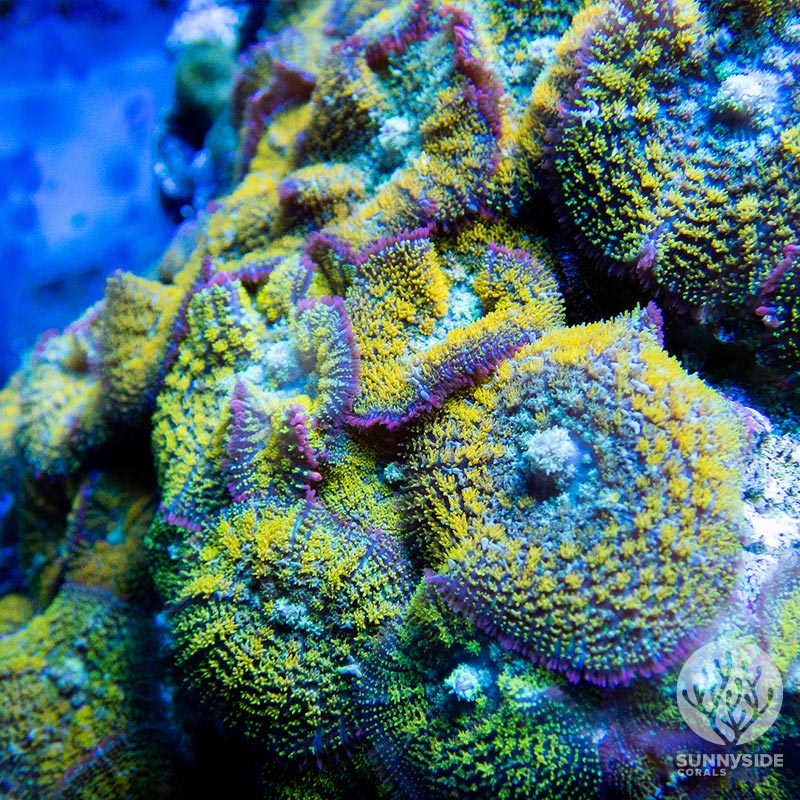
Things to Know Before You Buy Beginner Coral
Taking care of a saltwater tank can have a steep learning curve but once you get going it can be very rewarding. As technology advances, maintaining a healthy tank is increasingly easy. Once you get your system running smoothly and it’s stable you can grow most corals fairly easily. Things like dosers, calcium reactors, and other automated tools have made keeping corals a lot easier but may not be necessary. The nicest thing about beginner corals is they can be largely hands-off. If your tank is relatively stable and your coral are placed in a good spot, they should grow well for you.
Another important factor that plays a role in the success of growing beginner corals is the correct amount of lighting and flow. At Sunnyside Corals, we run a modified AB schedule with Gen 4 radions and supplement T-5 lighting on all our corals. However, most beginner corals do not need fancy lighting or flow. They are hardier corals and can adapt very well. Typically they like medium to low light and medium to low flow. Make sure to look at our recommendations for each coral that you look to buy to know for sure as it does change from coral to coral.
As a rule of thumb when buying any coral, the pricier ones are typically more touchy and grow slower. There are 1000’s of different corals out there. It is always best to start cheap and work your way up.
When can I add coral to my tank?
Every new tank has to go through a cycling phase where your tank’s water parameters start to balance out and your tank has the correct bacteria to support reef life. This cycle time can vary from tank to tank but you should always wait about a month before adding in coral. You might consider adding live sand and rock as well as snails and some hardy fish like damsels to add nutrients and healthy bacteria.
Dry Rock
If you started your tank with dry rock you will most likely have to wait close to 6 months to a year before you will be able to successfully keep anything alive. This is because dry rock can leach phosphate into the water for a very long time. This increases the amount of time your tank will need to cycle and be stable enough to support corals. Generally, soft corals are the best type of corals to try in your tank first. They are less susceptible to water parameter fluctuations and can help add healthy bacteria to your tank. Once you have success with soft corals you can try LPS corals. After a year to a year and a half, your tank should be stable enough to try some easy SPS corals like Montipora.
Live Rock
If you started your tank with live rock that process can be dramatically shorter. However, be aware that just because your levels are where they should be does not mean that your tank is actually ready for any corals. Typically when starting a tank with live rock, you can start to add coral slowly after one month. We recommend introducing LPS or Soft corals first with any new system. After having success with LPS and soft coral for a while you can begin to introduce easy SPS corals like Montipora. Acros should be the last thing you try to add in your system.
